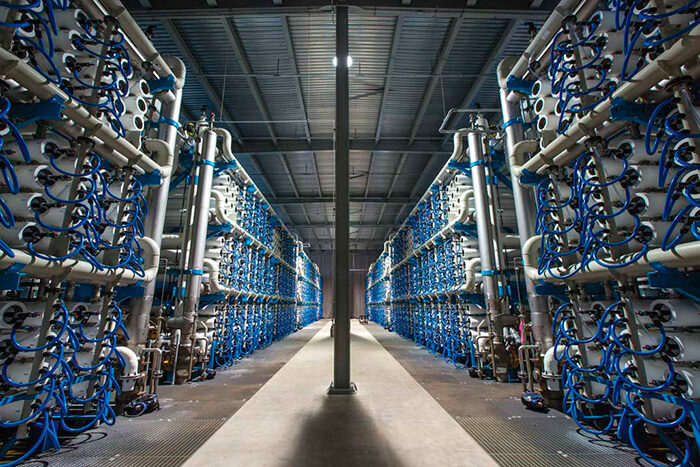Seawater covers 71% of the planet’s surface and represents 97% of the world’s water. With more than 15 years of experience, technologies and knowledge in desalination, FARAN supports municipalities and industries around the world in the implementation of their brackish or seawater desalination strategies.
Our all-encompassing range of water treatment solutions and seawater desalination technologies are dedicated to optimizing the management of the water resources. Combined with local presence and a worldwide network of experts, we ensure our clients the best possible solutions to supply high quality water, manage brine concentrates, produce or recover the energy.
Desalination has become a very affordable solution to cope with fresh water shortage especially in tropical as well as of off-shore areas. Reverse osmosis (RO) is the leading pressure driven membrane process which can be used for seawater or brackish water desalination. Every SWRO or BWRO unit shall be safeguarded with proper pretreatment. Desalinated water would be re-mineralized in post treatment unit for potable purposes.
Osmosis is a natural phenomenon, without which life would be made impossible. Osmotic processes enable plants to absorb nutrients from the ground. Our kidneys purify the blood in our bodies by means of osmosis.
Although osmosis has been discovered and studied as early as 1850, it has taken us until 1960 to be able to apply the process for water desalination.
Membrane filtration has been approached as a futuristic, expensive and complex process for a very long time. However, in the past fifteen years this process has developed to a mature and reliable technique, which is very usable for (drinking) water purification.
When we are dealing with a system, consisting of two fluids that are separated by a semi-permeable membrane (permeable, just not for salts) and we add salt on one side of the system, pure water will start flowing through the membrane. This flow will continue until the pressure is equal on both sides of the membrane. Afterwards the water level will be higher where the salt was added. The difference in water level, caused by the addition of a specific amount of salt, is called osmotic pressure. The osmotic pressure of seawater is around 26 bar.
We can explain the term “reverse osmosis” as follows:
To desalinate water, we must create a flow through a membrane, causing the water to leave the salty side of the membrane, flowing into the unsalted side. To achieve this, pressure must be created upon the water column on the salt side of the membrane; firstly, to remove the natural osmotic pressure and secondly, to create extra pressure on the water column, in order to push the water through the membrane. For the desalination of seawater, the pressure must be about 50-60 bars.
Reverse osmosis is the most economic process for the desalination of brackish and seawater. When we compare this process to the traditional thermal process of distillation, the capital investments and the energy use are much lower.

FARAN offers a state of art desalination packages with the best possible quality and ease of maintenance. This desalination package is based on valuable experiences of FARAN in designing and fabrication of BWRO/SWRO plants, and also its knowledge about various climatic conditions, specifications of raw water resources and probable changes in quality of mentioned resources.

